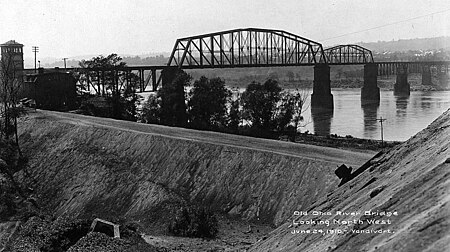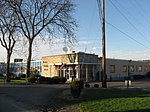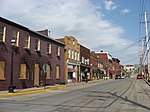Beaver Bridge (Ohio River)

The Beaver Bridge is a rail bridge spanning the Ohio River between Monaca and Beaver, Pennsylvania. It consists of two spans: a southern cantilever through truss of 769 feet (234 m) with 320-foot (98 m) anchor arms; and a northern camelback through truss of 370 feet (110 m). The bridge currently carries two tracks of CSX Transportation. The bridge was designed by Albert Lucius and built by McClintic-Marshall Company of Pittsburgh between March 1908 and May 1910 for the Pittsburgh and Lake Erie Railroad. The bridge is notable in that the railroad proceeded with the cantilever design despite the collapse of the Quebec cantilever bridge during construction in 1907. The Beaver bridge replaced a single-track bridge built in 1890, 300 feet (91 m) downstream from the current bridge's position, which itself replaced an 1878 wrought iron bridge at the same location.
Excerpt from the Wikipedia article Beaver Bridge (Ohio River) (License: CC BY-SA 3.0, Authors, Images).Beaver Bridge (Ohio River)
Atlantic Avenue,
Geographical coordinates (GPS) Address External links Nearby Places Show on map
Geographical coordinates (GPS)
| Latitude | Longitude |
|---|---|
| N 40.692906 ° | E -80.290833 ° |
Address
Beaver Bridge
Atlantic Avenue
15061
Pennsylvania, United States
Open on Google Maps








